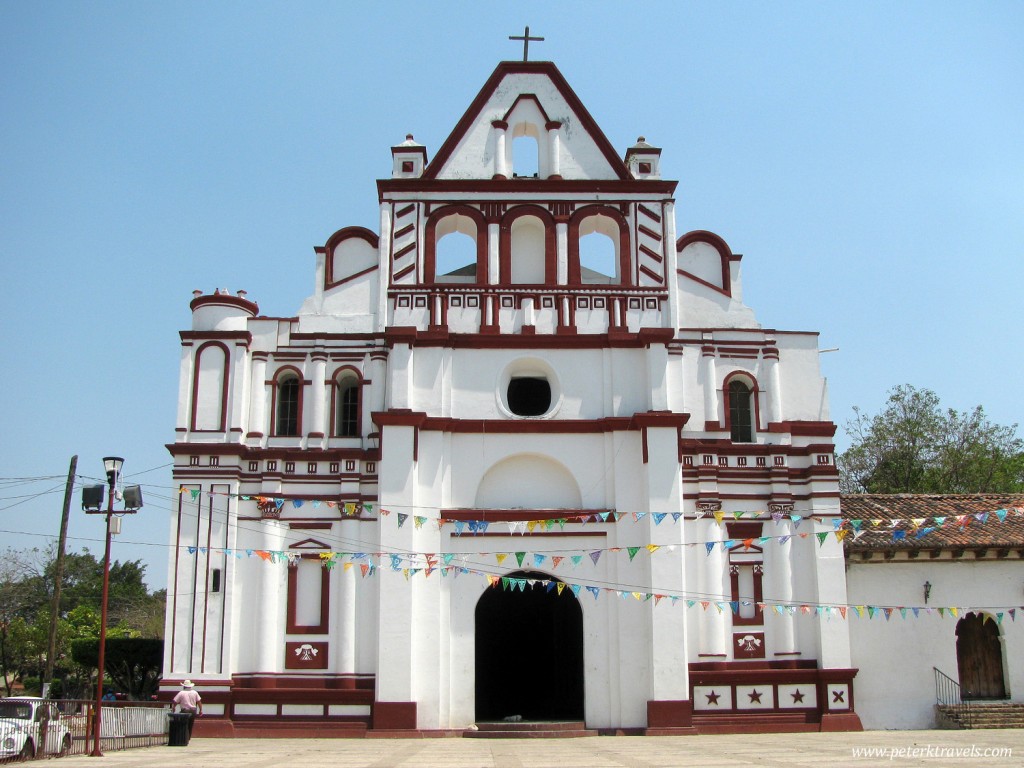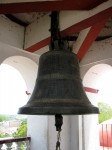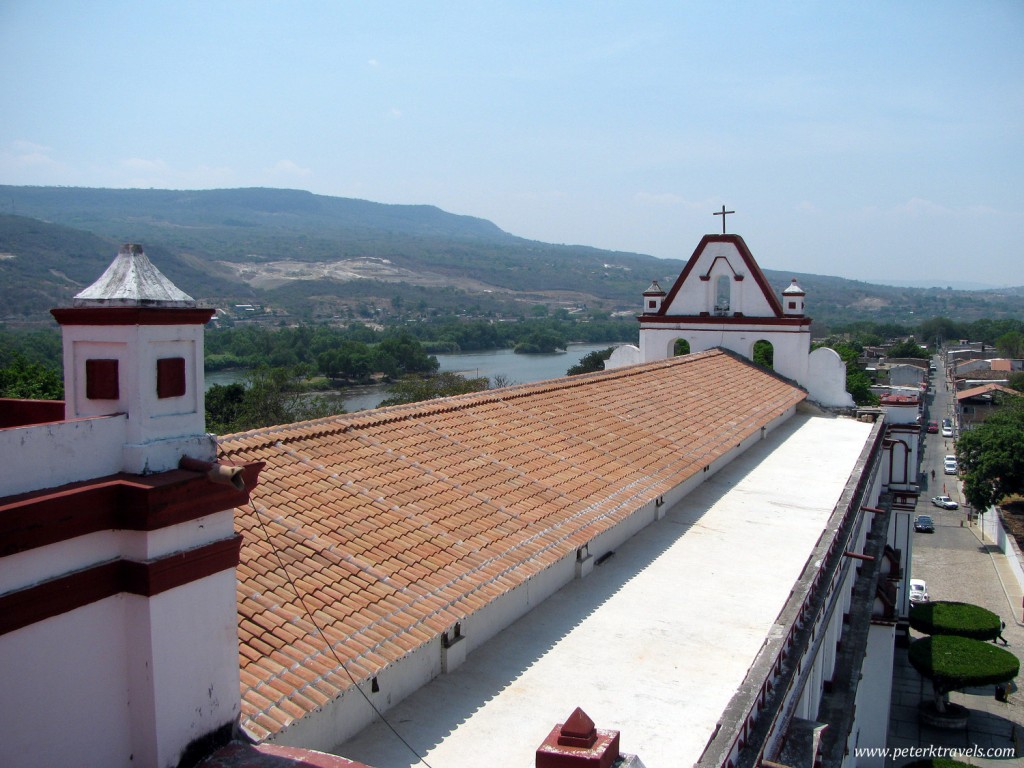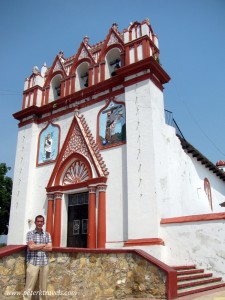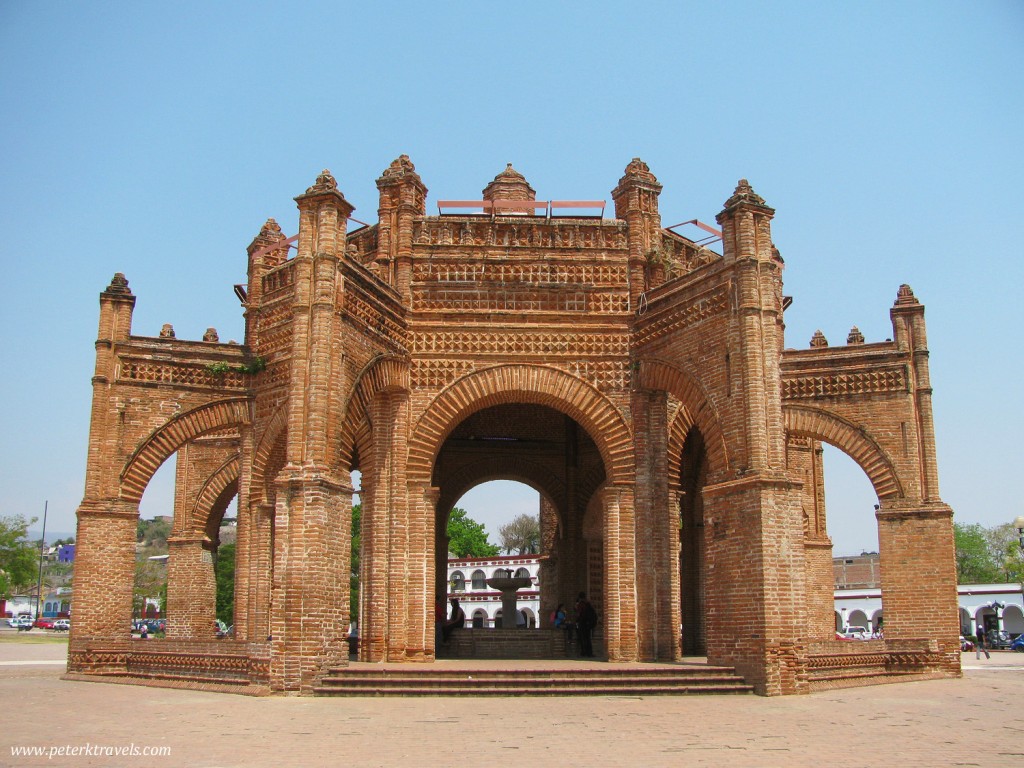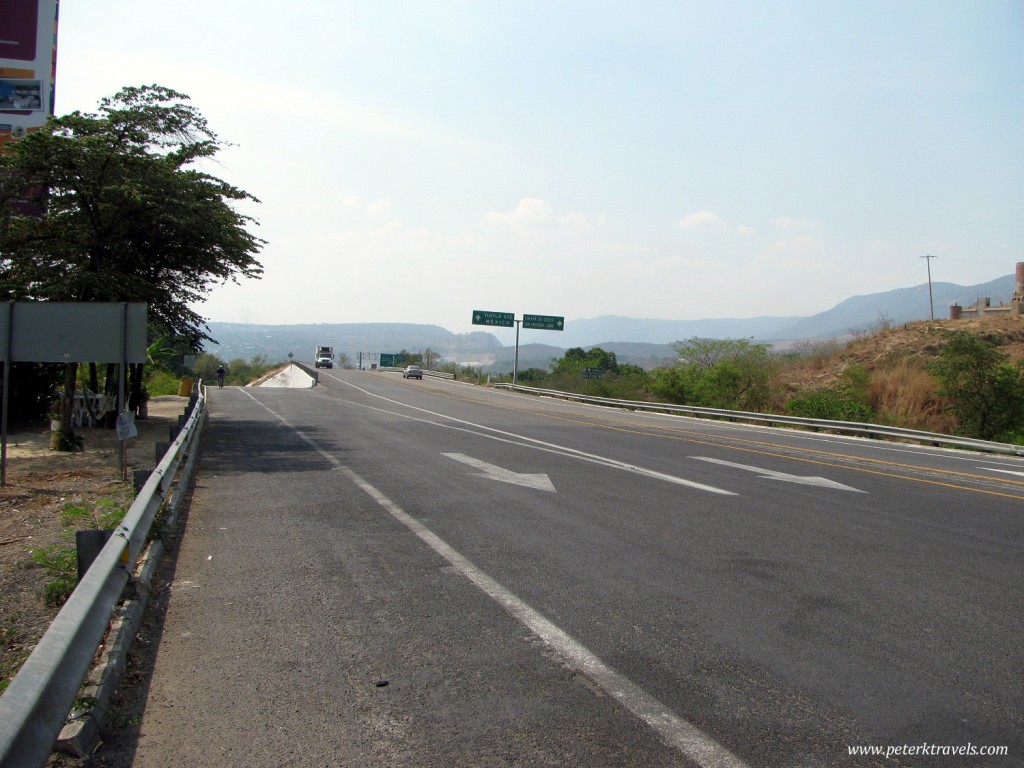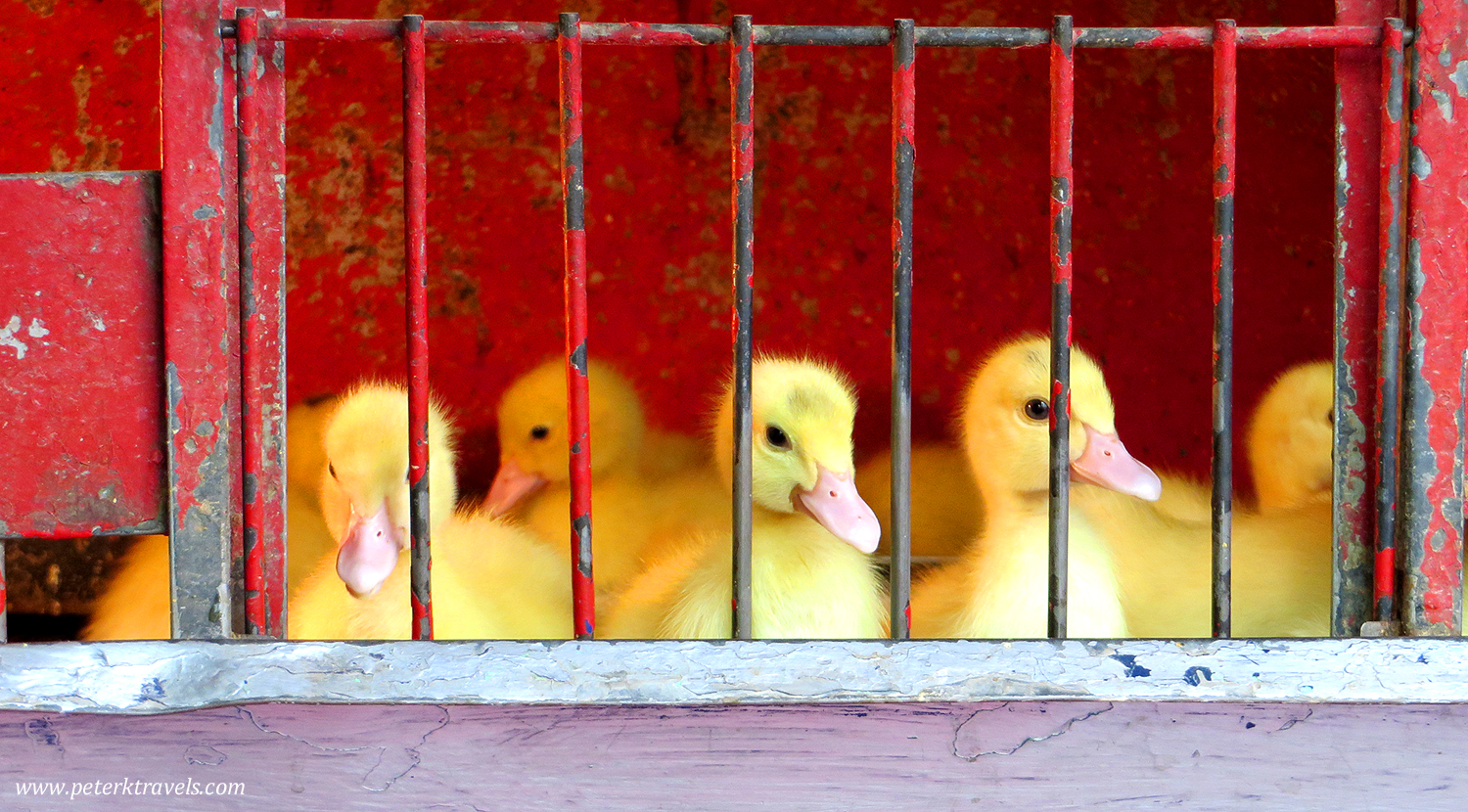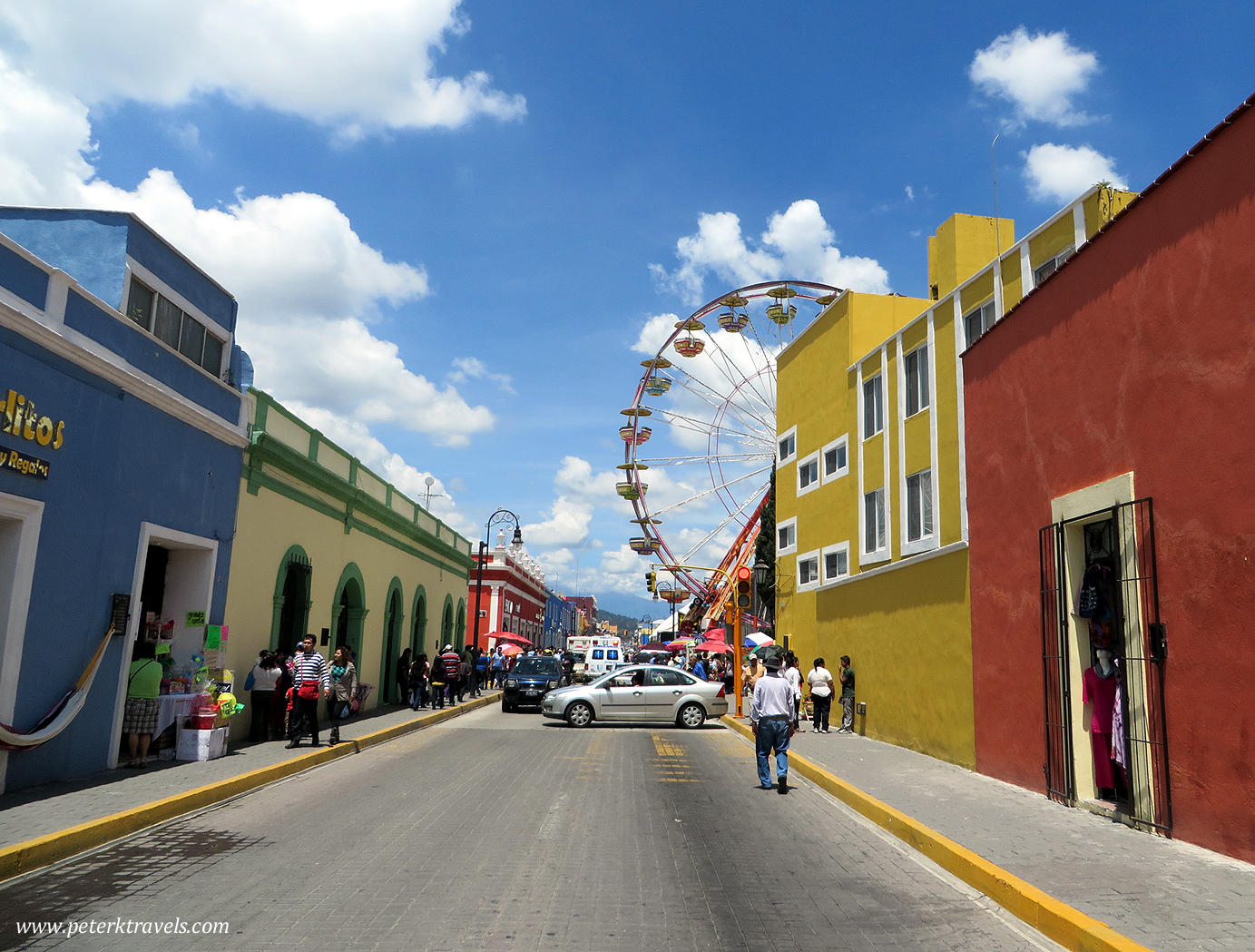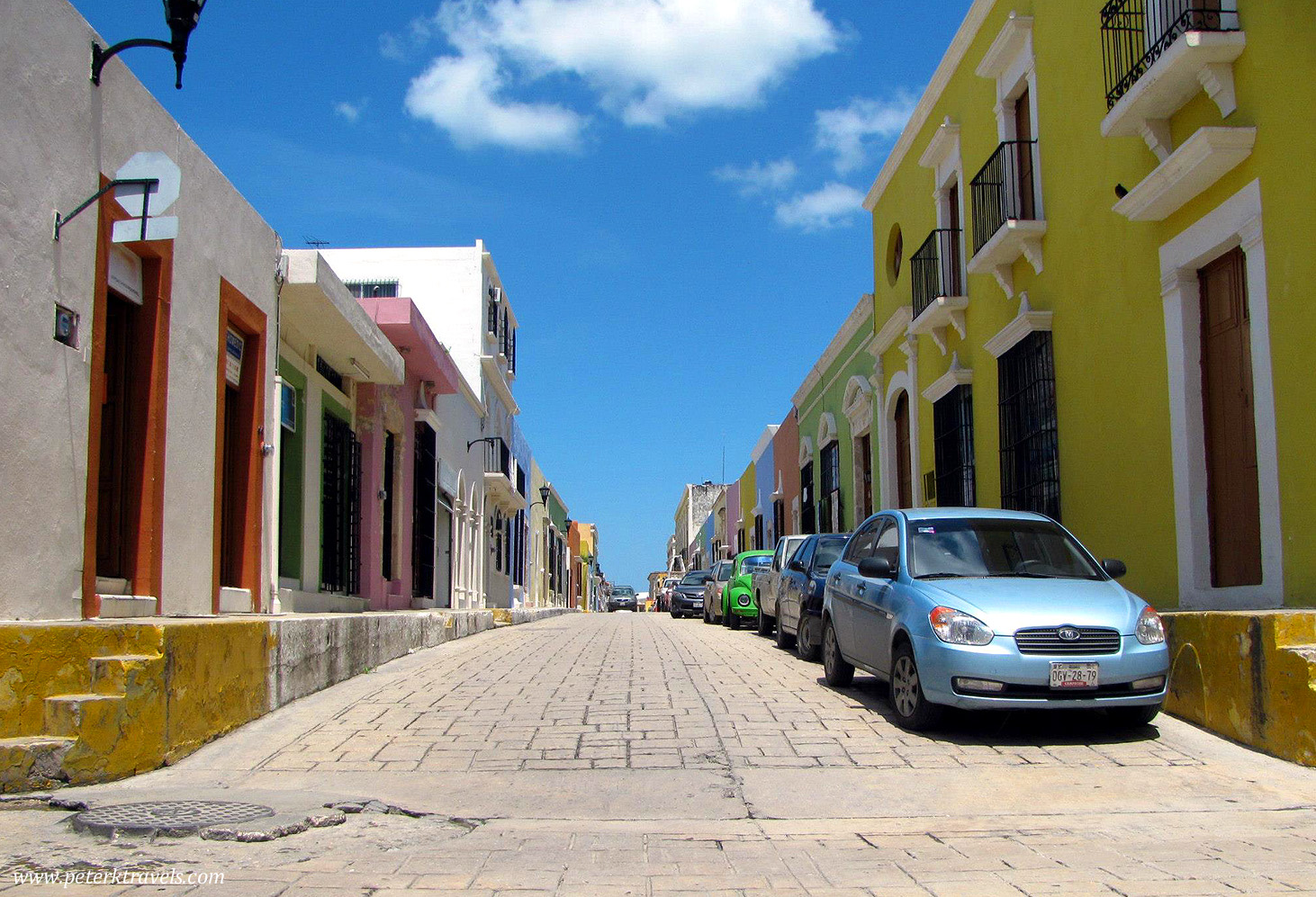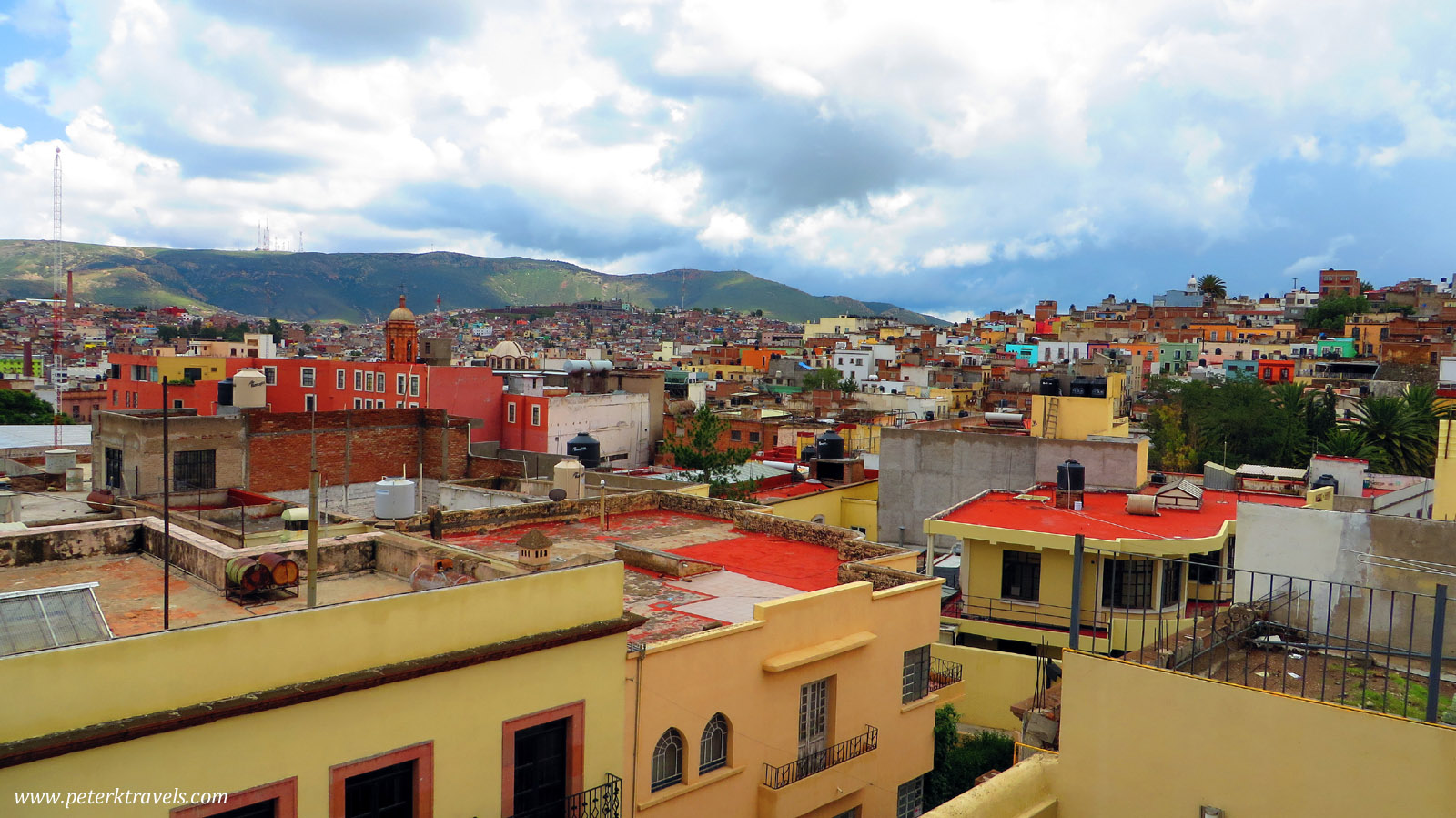Walking Around Chiapa de Corzo
On my April 2013 trip to Chiapas, I spent a day in Chiapa de Corzo. I covered my trip through Sumidero Canyon in another post. Many people come to Chiapa de Corzo just for that, and don’t see any of the other sights in town. Moon guide has a nice map of Chiapa de Corzo. Here’s a few other things I visited while I was there.
The Santo Domingo Cathedral is located only a couple of blocks away from the embarcadero. It’s hard to miss as the structure is quite large. It’s a beautiful white cathedral trimmed in red. The cathedral was constructed from 1554-1572.
Inside the cathedral, you can climb to the top of the belltower (campanario) for $10 pesos. This is well worth it! When you reach the top, you will have a great view as well as being able to see the bells.
There are several bells in the tower, but the largest is shown to the left. This bell was cast in 1576, and reportedly weighs over 10,000 pounds.
You can also see a great view looking out over the church. The picture below gives you some idea of just how big this church is. The view extends out over the town and towards the Rio Grijalva, which can be seen in the photo just to the left of the end of the cathedral. The belltower is accessed via spiral staircase, and it is a little claustrophobic.
The interior of the church is also quite lovely, with multiple chapels in addition to the main altar. They were doing some work on the interior while I visited, appeared to be some light painting and restoration.
There are other churches to see in Chiapa de Corzo. I decided to walk to the Iglesia El Calvario, which is located on Ave Julian Grajales where it meets Calle 21 de Octubre. This is about six blocks east of the main square. The church sits on a hilltop and can easily be seen from a distance.
The walk is pleasant, well, if you like heat. Chiapa de Corzo is a hot place. Even in April, it was probably in the 90s — and sunny. Walk on the side of the road that is in the shade. This church sits in a small park on the hilltop. It’s charming and small, with some interesting ornamentation, including a crucifixion scene on the front. Unfortunately, the church was not open at the time I happened to be there (it was mid-afternoon, and they are often closed then). I enjoyed taking photos of it.
From El Calvario, you can see the Ruinas San Sebastian — some ruins of another church. I didn’t visit these, but they are located on the map noted above.
Perhaps the most photographed building in Chiapa de Corzo is La Pila — the fountain. The fountain was built in 1562 and still works to this day. The construction is said to be Mudejar style, and looks like something you might see in North Africa. It’s built of brick and somewhat resembles a crown. The fountain is located on the main plaza, and is hard to miss. There’s also a clock tower on the main square, opposite La Pila. I don’t know the age, but it appears to be constructed in a similar style with similar materials.
At the end of my visit, I had to find a way to get back to San Cristobal. Because the San Cristobal bound colectivos and buses don’t enter Chiapa de Corzo, you need to get out to the highway and flag one down. I had come via Tuxtla Gutierrez on a bus, so it wasn’t clear to me exactly where on the highway to go. My solution was to pay a cab driver to take me to the spot. Cab drivers are a great resource — they almost always know how the local transport works, and where things are. I simply asked him to take me to the highway where I could catch the bus to San Cristobal. So he dropped me on the side of the road, where I waited about 15 minutes before waving down a colectivo. It always feels a little strange standing by the side of the road, waving at someone for a ride. But, that’s the way it works.

